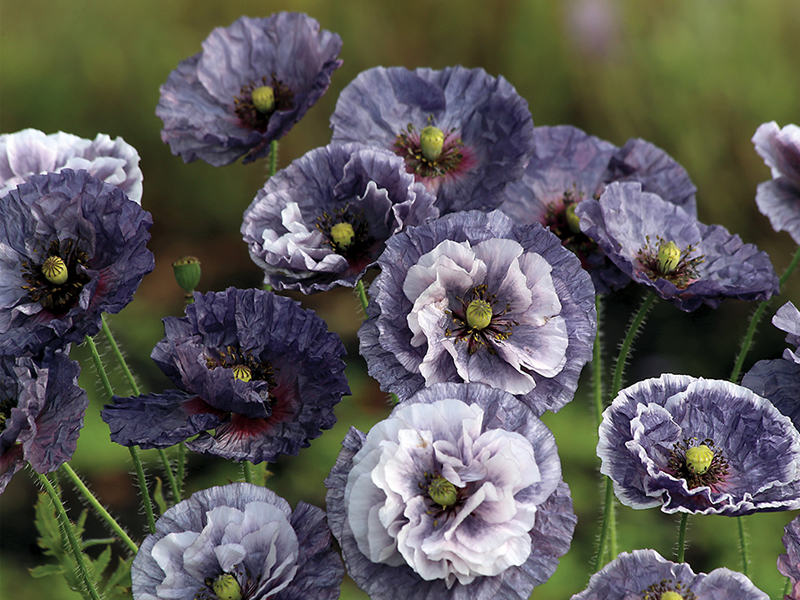While John Newton, an English slave trader, was caught in a deadly storm in 1748, he prayed like he had never prayed before. The ship was spared and John Newton had a newfound faith. He still worked in the slave trade until he retired in 1754, after which he studied theology and became a minister. Eventually he became an abolitionist and penned a poem with the memorable lines, “I once was lost, but now am found, was blind, but now I see,” and the hymn “Amazing Grace” was born.
Growing something different often means taking a leap of faith, and what better than to try your hand at than growing an amazing poppy, with the tongue-in-cheek name Amazing Grey (Papaver rhoeas). This corn poppy is the same family as the familiar red poppy, but instead of red, its flowers are silver grey to slate blue, with many of the blossoms trimmed in white edges. The flowers are delicate, as if made of crepe paper, with single and double blooms on bushy plants that grow 24-30 inches tall.
Poppies do not transplant well, so like all poppies, it is best to plant Amazing Grey directly into the garden in the fall or very early spring. The tiny seeds actually need a bit of a chill to germinate.
Amazing Grey poppies grow best in poor soil because rich soil produces too much vegetation and fewer flowers. Choose a sunny spot that drains well, so the plants never sit in soggy soil. These flowers are hardy enough to stand up to air pollution, so they work well along roadsides.
Because poppy seeds are so tiny, approximately 200,000 seeds per ounce, try mixing them with sand to make them easier to plant. Seeds are available in garden centers and nurseries or by mail from seed houses such as Territorial Seeds (www.teritorialseeds.com) or Park Seeds (www.parkseeds.com).
Amazing Grey poppy seeds need light to germinate; just scatter the seeds on the soil surface and gently press them into the dirt. Patience is a virtue, and the seeds may take up to a month to germinate. Once the plants are up and growing, thin them so they stand six to 10 inches apart. Pick off the dead flowers (called “deadheading”) to encourage more blooms.
When cut, poppies 'bleed' an oozy sap, so if you want to use them as cut flowers, burn the stem ends to extend vase life. You can leave the flowers to develop into small seed pods that are attractive in dried flower arrangements.
Plant Amazing Grey by itself, or mixed with other flowers for meadows and cottage gardens. They will attract bees and other pollinators. Deer and rabbits usually avoid eating corn poppies.
You can save seeds by letting the flowers fade naturally and form seedpods. Your seeds will last for up to five years.
Plant Amazing Grey poppies this year and you will have drifts of silver-grey blooms in the garden or to amazingly grace your tables.























































